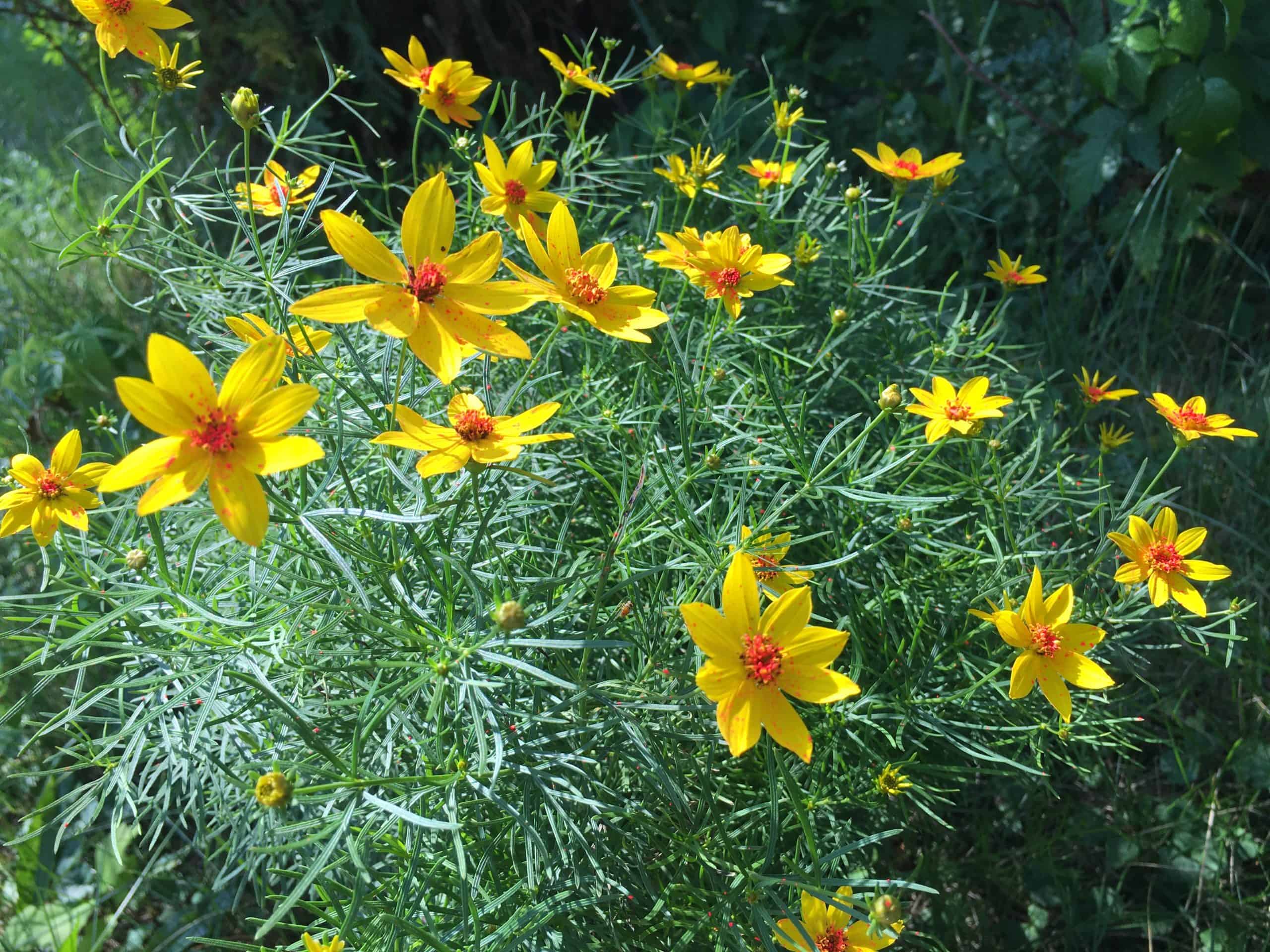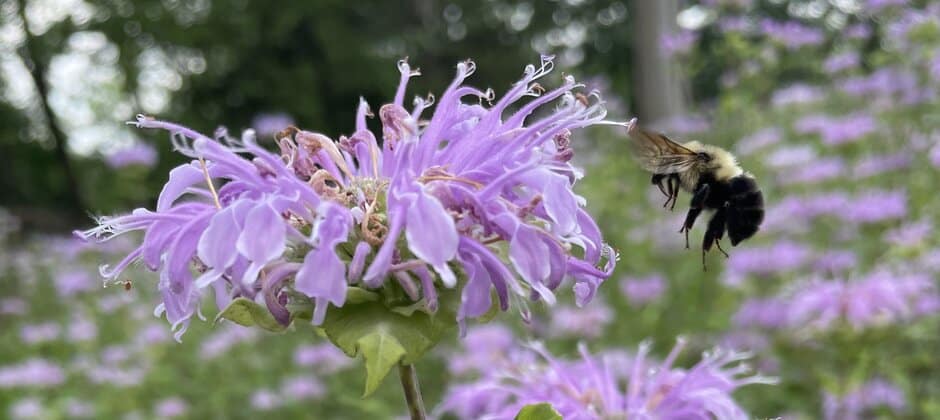Share this article
How does the bee cross the road?
They may be tiny and sky bound but it turns out bees have just as much difficulty crossing busy roads in Michigan as larger species that make use of crossing structures over or under busy highways.
Gordon Fitch found this out when his planned trip to southern Mexico was canceled due to the coronavirus pandemic. “Obviously, we weren’t able to go, so I was thinking about doing something locally,” said Fitch, who was a PhD candidate at the University of Michigan when he conducted the research. He had wondered if a slowdown in traffic due to the lockdown would affect the pollinators. “Unfortunately, by the time bees were flying, Michigan started to reopen,” said Fitch, now a postdoctoral scholar at the University of Massachusetts Amherst.
But Fitch’s curiosity persisted.
In a study Fitch co-led with Chatura Vaidya published in the Journal of Applied Ecology, they conducted an experiment to find out how bees traveled across different types of roads—about 40 of them, total—and how their pollinating activities were affected.
Instead of having to sit, wait and watch bees as they approached the roads, the team applied a fluorescent pigment powder, which represented pollen, on two different types of wild flowers common in the upper Midwest—Coreopsis verticillata and Monarda fistulosa. They already knew smaller pollinators like sweat bees that pollinate plants wildflowers, fruits and vegetables, and a variety of other crops, tended to visit the former, while larger honeybees and bumblebees that pollinate native wildflowers and crops like berries, squash and melons, visit the latter.
The same plants occurred across the road, but didn’t have the pigment applied. “We set those out in the morning and collected them at the end of the day,” Fitch said. They did this across roads with different sizes and traffic volumes. They also had a control group where flowers were across from each other without a road in between.
The researchers then looked at the movement of the pigment to the bare flowers. “The roads really did reduce the amount of pigment the flowers were getting in a pretty dramatic way,” he said.

A Coreopsis flower with fluorescent pigment that represented pollen in the researchers’ experiment. Credit: Gordon Fitch
They found that for Coreopsis verticillata, 50% fewer plants received pigment across the road than the control. For Monarda fistulosa, one-third less flowers had pigment. Fitch said that these findings show smaller bees have more trouble crossing roads. This means that sweat bees won’t pollinate as many wildflowers or crops and their population becomes fragmented.
The team also found that larger roads, with more lanes and traffic, in general had fewer bees getting across them. “Once you get above four lanes of traffic, there was no pigment transfer for Coreopsis verticillata,” he said.
Fitch said these findings show mitigation measures are necessary, especially because bees are so common in urbanized areas. “Cities can be surprisingly good places for bees and support high diversity and abundance,” he said, adding that agricultural areas are quite the opposite.
Some of the strategies already put in place for larger wildlife species may actually be beneficial for pollinators as well, he said. For example, wildlife bridges can be planted with native vegetation to help “funnel them across,” he said.
But Fitch said strategies to help bees cross the street can have human benefits as well. “There’s growing interest in transitioning away from vehicle traffic and toward making streets more for pedestrians and cyclists,” he said. “Those strategies involve removing lanes of traffic and making protected bike lanes or widening sidewalks.” In addition, pollinator friendly plantings, which can also be aesthetically pleasing, can be planted in the medians and around roads.
“There’s interest in these things for other reasons such as human well-being and climate,” he said, “so, I think there are cool opportunities for these win-win conservation moves.”
Header Image: A bumble bee (Bombus griseocollis) visits a Monarda fistulosa flower. Credit: Gordon Fitch








